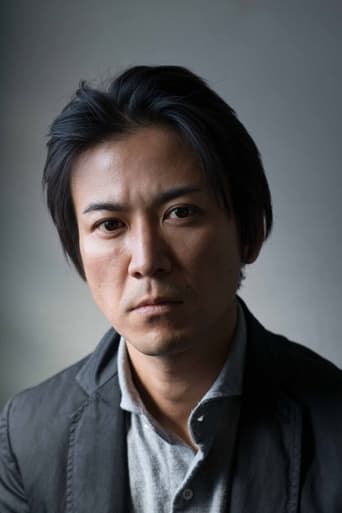Alicia
I love this movie so much
Noutions
Good movie, but best of all time? Hardly . . .
Arianna Moses
Let me be very fair here, this is not the best movie in my opinion. But, this movie is fun, it has purpose and is very enjoyable to watch.
Calum Hutton
It's a good bad... and worth a popcorn matinée. While it's easy to lament what could have been...
CountZero313
Japan's infamous Red Army emerged from the tumultuous anti-Anpro demonstrations of the 50s and 60s. Anyone who has encountered Japan's current crop of apathetic, myopic undergraduates will be surprised to know just how active and radical their parents' generation were. Japan's present malaise seems to be a hangover from the excesses of those times, and Koji Wakamatsu sets out to chronicle in detail the worst of it, the events that led to the siege in a mountain lodge and a shoot out with police.As much as the detailing for the historical cinematic record is the central concern, the film is also finely attuned to the depictions of a descent into collective madness. Idealists are taken in by demagogues as claustrophobia engenders paranoia and murderous intent. Maki Sakai as the ill-fated Toyama falls furthest, a naive college girl spouting creed she does not understand. Even before the darkness descends, she seems out of place. Go Jibiki is unfaltering as the relentless Mori, while Akie Namiki wears an evil stare that is positively unnerving. But it is perhaps unfair to single out certain performances in what is a collective triumph.A three-hour-plus running time is gruelling at any time, and with a film that authentically serves up historical incidents that are difficult to stomach, it becomes a double punch. But there is something commanding about Wakamatsu's mise-en-scene, which along with the sublime performances, and hypnotic soundtrack, make one feel the viewing itself is a mission that must be completed.As a record of an important episode in Japan's 20th century patchy flirtations with mass murder, the film is an outstanding triumph. As a representation of the chilling banality of evil, it is also shockingly plausible. The viewer is reminded of all manner of human failings, and of a singular triumph - the power of cinema to inform and edify. United Red Army is quite simply a masterpiece.
Houston1
The first hour or so of United Red Army sets up the necessary background. It reviews the events of the 1960's in Japan, particularly the student movement against militarism, tuition increases, etc., and features a lot of original news footage and still photographs from the time. The film was clearly done on a small budget and features mostly interior scenes on stage sets, so the television and newspaper clips serve in lieu of any attempt to portray the big events of the day (demonstrations then could include hundreds of thousands of people). Though I'm very familiar with the ideas of the Left, I know little about Japan and found this part engaging.The second part, which lasts well over an hour, takes places in a remote cabin in the mountains, where members of the URA "revolutionary" student group are hiding out. One after another, they engage in so-called "criticism/ self-criticism" sessions involving the beating, torture, and ultimately killing of fellow members over various political apostasies and trivialities (you didn't clean the gun properly, comrade! you're wearing makeup, comrade!). Sitting and watching these grueling, interminable scenes are, I suppose, a bit like being forced to sit through such a session yourself – so the form of the film at this point corresponds neatly to its content.The third, final hour details the seizure of a small mountain lodge by the remaining URA militants. The standoff between the URA and the security forces (over 1,500 were mobilized) is never shown from the outside as a whole, and just a few riot police appear during the scene in which the lodge is stormed. This gives the last part of the film an intensely psychological and claustrophobic feel: there are only the five militants, their one hostage, lots of barricaded interiors, no exterior visuals (at best, you just see sky and light), wafting tear gas and smoke, and voices (from the police commanders and some of the students' parents). It is effective and underscores the way in which the "revolutionaries'" commitment was more personal and subjective and less about the reality of the outside world.This film can be quite nasty, a cross between a historical-realist, political work (like the recent Carlos) and Japanese snuff-horror (Audition, etc.). I'm a history nerd, so I'll recommend it, but you should know what you're in for.
Jurguens
In the early 60s student protests lead to the formation of a few left leaning organisations. Events spiral through the 60s with the protests turning into student revolts. Two organisation come to the fore as the most radical and enduring: the RAF, and the RLF. The two of them decide to join and form the United Red Army with the aim of starting a revolution that will lead to a better world. Except things don't go according to plan and events spiral down into an orgy of hatred, torture, and violence.This is an uncompromising film directed by master of controversy Koji Wakamatsu. The story is linear and easy to follow. Perhaps it saturates the viewer with too much information, and some parts are too long, but it is quite interesting to see the formation of a terrorist group and their descent to hell. Furthermore, the fact that Wakamatsu knew a lot of the terrorists, himself participating in some of their earliest actions adds weight to the film.It is a tough film to watch but quite interesting.
Thorsten_B
Koji Wakamatsus latest entry in a line of more than 100 films is narrated in the style of "jutsuroku": a mixture of documentation and fictional scenes. In the very beginning of it's 189 minutes, an overview of the Japanese student movement in the 1960s is given almost à la history Channel. In uncomplicated language, a voice-over speaker reflects the political occurrences, mentions the protagonists and, where necessary, explains the backgrounds. Slowly the fictional parts, which are woven into the documentary material, step in the foreground; even then all new characters are introduced with name, age and other details which are written on the screen above their heads. Based on various sources that witnessed the actual events, Wakamatsus surprisingly straight narration retells what happened within the Japanese Red Army Fraction after it's unification with fellow underground political party RLF. In their aim to overthrow the Japanese society both by terms of terrorist methods as well as with socialist agitation, the two groups got together in the mountains of the Gumma district to train for the "war" and to endlessly discuss their ideological basis. More and more, their exclusion from the outer world due to pressure from the police lead them to restrict to their own world and to heighten their political ideas to a sort of fundamental religion. Forced to put onto "self-trial", 14 of the 26 members fail to express sincere devotion to the communistic aim and are subsequently killed by their fellow fighter. Inevitably, what started out as a student movement to the world to the better, ends as an internal slaughter of fanatics killing each other. Compared to other left-wing terrorist movements from the 1970s (such as the German RAF, the French Action Directe or the Italian Brigade Rosse), the Japanese United Red Army – or at least what Wakamatsu shows us – is significant in it's harsh internal struggles; the war they wanted to fight, it seems, was more a war against their own insecurities and fears than against the Capitalist world. Although an important factor, it was a wise choice not to try to "explain" the events with the specialties of Japanese culture. By giving a chronological retelling of historical reality with the attempt to strictly remain with the facts, Wakamatsu rejects the option of fantasizing about motives and motivations, which is ever more intriguing given the fact that he knew many of the actual people personally. (He was himself involved in some of their early actions in the founding years). In the end, after three hours went by incredibly fast, what left is a deep and strong impact from a brilliant film that asks for repeating viewing and will most likely lead to further discussions and research on the viewers' side. It's a gripping, intelligent, tense and, yes, an uncompromising as well a stimulating film.





